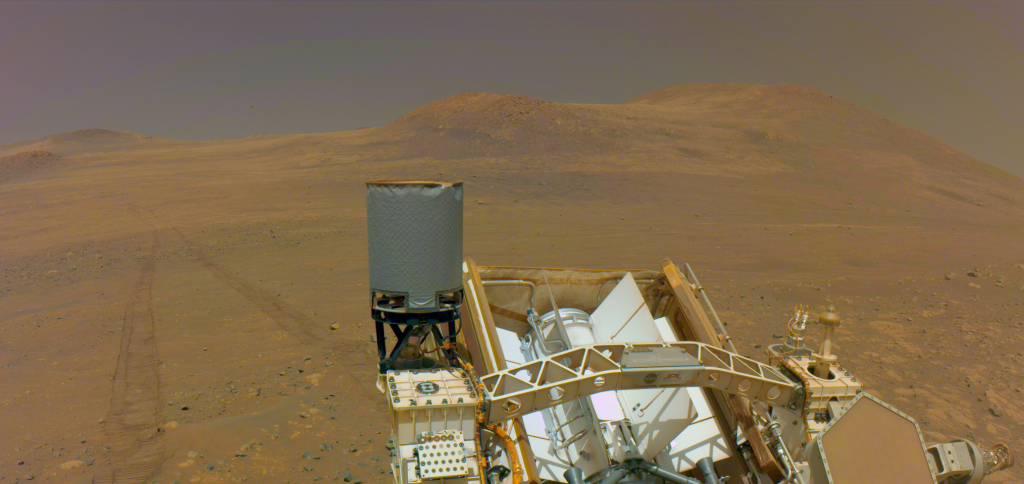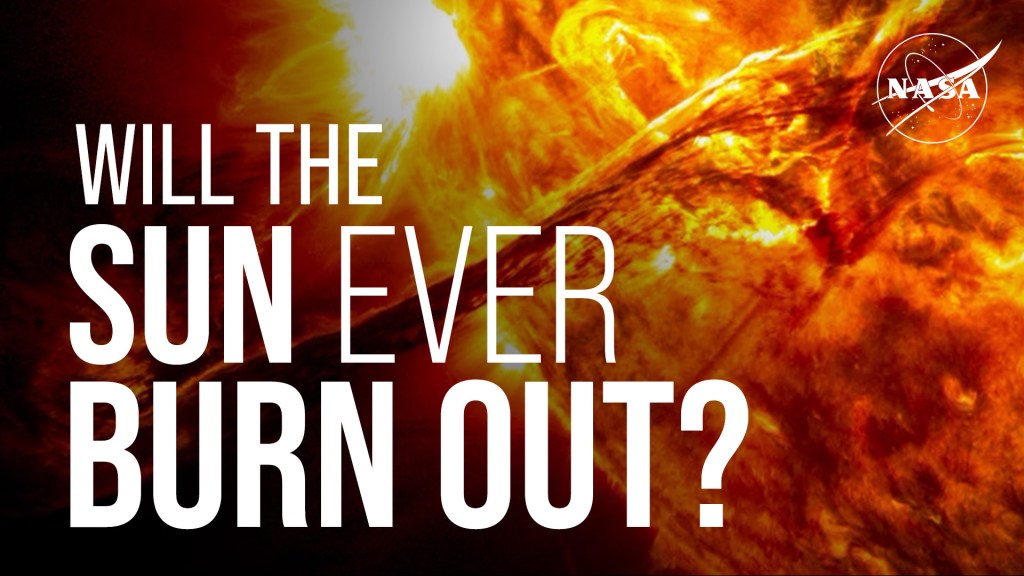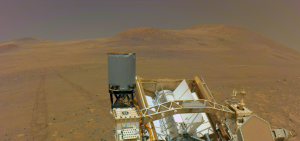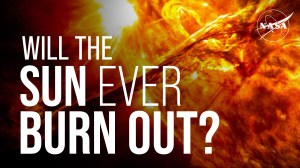The next full Moon will be midday on Monday, August 3, 2020.

The Next Full Moon is the Sturgeon Moon, the Green Corn Moon, the Raksha Bandhan Moon, Nikini Poya, and the end of the Esala Perahera festival.
The next full Moon will be midday on Monday, August 3, 2020, appearing "opposite" the Sun (in Earth-based longitude) at 11:59 AM EDT. The Moon will appear full for about three days centered around this time, from late Saturday night through early Wednesday morning.
The Maine Farmer's Almanac first published "Indian" names for the full Moons in the 1930's, and over time these names have become widely known and used. According to this almanac, as the full Moon in August and the second full Moon of Summer, the Algonquin tribes in what is now the northeastern USA called this the Sturgeon Moon after the large fish that were more easily caught this time of year in the Great Lakes and other major bodies of water. This Moon was also called the Green Corn Moon.
This full Moon corresponds with the Hindu festival Raksha Bandhan, celebrating the bond between brothers and sisters. One of the traditions is for sisters of all ages to tie a rakhi (a cotton bracelet) around their brother's wrist, receiving a gift from the brother in return, as a sign of the continuing bond between them. The term "Raksha Bandhan" translates as "the bond of protection, obligation, or care."
Every full Moon is a holiday in Sri Lanka. This full Moon corresponds with the Nikini Poya holiday, commemorating the first Buddhist council, which occurred about 2,400 years ago, sometime around 400 BCE. In Kandy, Sri Lanka, this full Moon corresponds with the end of the Esala Perahera festival, also known as the Festival of the Tooth, a two-week Buddhist festival held each year.
In most lunisolar calendars the months change with the new Moon and full Moons fall in the middle of the lunar months. This full Moon is in the middle of the sixth month of the Chinese calendar and Av in the Hebrew calendar. The 15th day of Av, roughly corresponding with this full Moon, is Tu B'Av, a holiday in modern Israel similar to Valentine's Day. In the Islamic calendar the months start with the first sighting of the waxing crescent Moon after the New Moon. This full Moon is near the middle of Dhu al-Hijjah, the twelfth and final month of the Islamic year, a sacred month that is the month of the Hajj. Making the Hajj or pilgrimage to Mecca at least once in your life is one of the Five Pillars of Islam.
For Science Fiction fans, a note on the author Theodore Sturgeon (in honor of the Sturgeon Moon). According to Wikipedia, Theodore Sturgeon wrote over 200 stories, mostly science fiction but some horror and mystery stories. For Star Trek fans, he wrote several scripts that introduced important and well known concepts into the series, although only two of his scripts were produced. His Star Trek scripts introduced "pon far," the Vulcan hand symbol, the phrase "live long and prosper," and (in a script that was not produced but that influenced later scripts) the "Prime Directive."

As usual, the wearing of suitably celebratory celestial attire is encouraged in honor of the full Moon. In addition, be nice to your siblings and consider reading some Theodore Sturgeon.
As for other celestial events between now and the full Moon after next:
Comet NEOWISE Begins to Fade
Because it will be dimming as it moves away from the Earth, I'm mentioning Comet C/2020 F3 (NEOWISE) up front. Under good viewing conditions this comet was a naked eye comet earlier in July. This comet was discovered on March 27, 2020. It survived its closest approach to the Sun on July 3 (closer than Mercury) and is now rapidly moving away from the Sun and the Earth. The comet passed its closest to the Earth on Wednesday, July 22, 2020. It will continue to dim as it moves away but will also appear higher in the sky (for the Northern Hemisphere), making it easier to see with a telescope. It is a diffuse object, so it is much easier to see when the sky is really dark, and this means the light of the waxing Moon will interfere with visibility. Since its brightness might change depending upon how much gas and dust it gives off, it is hard to predict how many more evenings it might be visible by telescope.
This comet was discovered by NASA's Near Earth Object Wide-field Infrared Survey Explorer (NEOWISE). NEOWISE was launched as the WISE mission on December 14, 2009, using stored frozen solid hydrogen to keep its infrared detectors cold for astronomy observations. After this stored cryogen ran out, it observed for four months using only its mid-wavelength infrared detectors. The spacecraft was put into hibernation in February 2011. In September 2013 it was revived to look for Near Earth Objects (NEOs). So far, NEOWISE has discovered 33 comets and 313 near Earth asteroids (NEAs), including 57 potentially hazardous asteroids (PHAs) with orbits that might someday bring them threateningly close to the Earth.
Shorter Days
As summer continues, the daily periods of sunlight will continue to shorten. For the Washington, DC area (using the location of NASA Headquarters), on the day of the full Moon (Monday, August 3, 2020) morning twilight will begin at 5:06 AM EDT, sunrise will be at 6:11 AM, solar noon will be at 1:14 PM when the Sun will reach its maximum altitude of 68.4 degrees, sunset will be at 8:17 PM, and evening twilight will end at 9:22 PM. By the day of the full Moon after next (Wednesday, September 2, 2020) morning twilight will begin at 5:39 AM, sunrise will be at 6:38 AM, solar noon will be at 1:07 PM when the Sun will reach its maximum altitude of 58.7 degrees, sunset will be at 7:36 PM, and evening twilight will end at 8:35 PM.
A Great Summer for Jupiter and Saturn Watching
On the evening of the full Moon, as evening twilight ends, the bright planet Jupiter and the fainter planet Saturn will appear in the southeast, with Jupiter to the right about 19 degrees above the horizon and Saturn on the left about 18 degrees above the horizon. The bright star appearing closest to overhead will be Vega, the brightest of the stars of the "Summer Triangle," appearing 72 degrees above the eastern horizon. The other bright stars of the "Summer Triangle" are Deneb, which will appear about 50 degrees above the horizon in the east-northeast, and Altair, which will appear about 43 degrees above the horizon in the east-southeast. The comet C/2020 F3 (NEOWISE), if it is still visible with amateur telescopes, will appear almost due west at about 35 degrees above the horizon (but since it is a diffuse object, you may want to look later in the night when the sky has had a chance to really darken).
As the lunar cycle progresses, the background of stars and planets will appear to shift towards the west. This summer should be a great time for Jupiter and Saturn watching, especially with a backyard telescope. Jupiter was at its closest and brightest for the year on July 14, and Saturn at its closest and brightest on July 20, 2020, (called "opposition" because they will be opposite the Earth from the Sun). Both will appear to shift towards the west over the summer months, making them visible earlier in the evening sky (and friendlier for backyard stargazing, especially if you have young ones with earlier bedtimes). With clear skies and a small telescope you should be able to see Jupiter's four bright moons, Ganymede, Callisto, Europa, and Io, shifting positions noticeably in the course of an evening. For Saturn, you should be able to see the brightly illuminated rings as well as the motions of Saturn's moons, particularly the largest moon, Titan.
By the evening of September 1, 2020 (the evening just before the full Moon after next), as evening twilight ends (at 8:37 PM EDT for the Washington, DC area), the bright planet Jupiter and the fainter planet Saturn will appear in the south-southeast, with Jupiter to the right about 27 degrees above the horizon and Saturn on the left about 26 degrees above the horizon. The bright star appearing almost exactly overhead will be Vega, the brightest of the stars of the "Summer Triangle," appearing 86 degrees above the eastern horizon. The other bright stars of the "Summer Triangle" are Deneb, which will appear about 62 degrees above the horizon in the east-northeast, and Altair, which will appear about 53 degrees above the horizon in the southeast. If you are one of the approximately 20 percent of the USA population living near areas dark enough you might be able to see the Milky Way running across the sky from south-southwest to north-northeast once the sky darkens to full nightfall. See the entry below for August 25 for more information on the Qixi Festival and Chinese legends related to these three stars and the Milky Way.
August 3-5: Venus and Mars
On the morning of the full Moon on Monday, as morning twilight begins (at 5:06 AM for the Washington, DC area), the brightest of the visible planets, Venus, will appear about 25 degrees above the horizon in the east. Jupiter will have already set, so the next planet in brightness will be Mars, appearing 54 degrees above the horizon in the south-southeast. Almost as bright as Mars, Mercury will appear only about 1 degree above the horizon in the east-northeast. The faintest of the visible planets, Saturn, will just be setting in the west-southwest, and this will be the last morning that Saturn will be above the horizon at the time morning twilight begins. No particularly bright star will appear near to overhead, with the planet Mars the closest at 54 degrees.
As the lunar cycle progresses, the background of stars will appear to shift towards the west. After August 5, Mercury will no longer rise before morning twilight begins. Venus will continue to gradually dim as it moves away from the Earth, and will appear higher in the sky each morning until early September 2020. By the morning of the full Moon after next, Wednesday, September 2, 2020, as morning twilight begins (at 5:39 AM EDT for the Washington, DC area), bright Venus will appear in the east about 29 degrees above the horizon. Mars will appear in the southwest about 52 degrees above the horizon. The bright stars of the "Summer Triangle" will be setting in the northwest. The star appearing closest to overhead will be Capella, appearing 67 degrees above the horizon towards the east-northeast, with Aldebaran a close second at 62 degrees above the horizon towards the southeast. Capella, at 42.9 light-years from Earth, and Aldebaran at about 65 light-years, are both part of the local arm of our home galaxy, called the Orion–Cygnus Arm, which includes the brightest of the stars in our skies, Sirius (at 8.6 light-years from Earth), which will appear about 16 degrees above the horizon in the southeast.
Meteor Showers: Southern-Delta Aquarids & Perseids
If you happen to find yourself in a place with clear, dark skies, away from city lights, especially if there is no Moon in the sky and it is near or after midnight but before the sky starts to show any sign of dawn, keep a look out for meteors. Last month I mentioned the Southern Delta-Aquariids that are expected to peak the morning of July 30, 2020, and remain active until August 23. This meteor shower, which under ideal conditions is expected to produce about 25 visible meteors per hour, is best seen from the Southern Hemisphere, so conditions are not as good for us in the north. The best time to look should be on Wednesday morning, July 30, 2020, after moonset (at 2:09 AM EDT for the Washington, DC area) and before any sign of dawn (before 4:21 AM). The best conditions would be if the weather is clear with no clouds or high hazes, you can find a place that has a clear view of a wide expanse of the sky especially towards the south, and it is a place that is far from any light sources or urban light pollution. The Southern Delta-Aquariids are caused by dust of uncertain origin (possibly comet 96P/Machholz) entering our atmosphere at 41 kilometers per second (92,000 miles per hour).
The Perseid meteor shower is expected to be active from July 17 to August 24, peaking on August 12, 2020, sometime between 9 AM and noon EDT (when we can't see them). Under ideal conditions (which we will not have this year due to both timing and moonlight), the Perseids can produce about 100 visible meteors per hour, making it potentially the third best meteor shower of the year (after the Quadrantids in early January and the Geminids in mid December). The best time to look from North America should be late on Tuesday night, August 11 or the early morning of Wednesday, August 12, 2020. When exactly would be the best time to look is unclear (to me, at least). These meteors appear to radiate out in all directions from the constellation Perseus (hence their name). This radiant is far enough north to be relatively high in the northeast after 10 or 11 PM on Tuesday. Meteor rates should increase as we get closer towards the peak on Wednesday morning, but the waning half-moon will rise in the east-northeast (at 12:24 AM EDT for the Washington DC area), and moonlight will make it harder to see the fainter meteors. The best conditions for viewing near the peak would be if the weather is clear with no clouds or high hazes, you can find a place far from any light sources or urban light pollution, and you find a clear view of a wide expanse of the sky while still having something to block direct moonlight from affecting your night vision. The Perseid meteor shower is caused by dust from the comet 109P/Swift-Tuttle entering our atmosphere at 59 kilometers per second (132,000 miles per hour).
If you do go out looking for meteors, be sure to give your eyes plenty of time to adapt to the dark. The rod cells in your eyes are more sensitive to low light levels but play little role in color vision. Your color-sensing cone cells are concentrated near the center of your view with more of the rod cells on the edge of your view. Since some meteors are faint, you will tend to see more meteors from the "corner of your eye" (which is why you need a view of a large part of the sky). Your color vision (cone cells) will adapt to darkness in about 10 minutes, but your more sensitive night vision will continue to improve for an hour or more (with most of the improvement in the first 35 to 45 minutes). The more sensitive your eyes become, the more chance you have of seeing meteors. Even a short exposure to light (from passing car headlights, a glance at the Moon, etc.) will start the adaptation over again (so no turning on a light or your cell phone to check what time it is).
Distant Asteroid Pass
Even though they are not usually visible, I include in these Moon missives information about Near Earth Objects (mostly asteroids) that may pass the Earth within 5 lunar distances, because I find it interesting that we have discovered so many. On Tuesday at 4:55 PM EDT (2020-Jul-28 20:55 UTC), Near Earth Object (2020 OR4), between 20 and 45 meters (66 to 148 feet) across, will pass the Earth at 1.2 lunar distances traveling at 22.91 kilometers per second (51,250 miles per hour).
July 29 to 30
On Wednesday night into early Thursday morning, the bright star Antares will appear about 5 degrees below the waxing gibbous Moon. For the Washington, DC area, evening twilight will end around 9:28 PM EDT when the Moon will be 30 degrees above the horizon in the south. Antares will set before the Moon in the southwest Thursday morning at about 1:34 AM.
July 30: Southern Delta-Aquariids Peak
The Southern Delta-Aquariids are expected to peak on Wednesday, July 30, and remain active until August 23. This meteor shower, which under ideal conditions is expected to produce about 25 visible meteors per hour, is best seen from the Southern Hemisphere, so conditions are not as good for us in the north. The best time to look should be on Wednesday morning, July 30, 2020, after moonset (at 2:09 AM EDT for the Washington, DC area) and before any sign of dawn (before 4:21 AM). The meteor shower summary earlier in this Moon Missive has more information on when and where to look.
August 1-2
On Saturday morning, if you have a clear view of the horizon in the east-northeast, you might be able to see the bright star Pollux about 7 degrees to the upper left of the planet Mercury. For the Washington, DC area, Mercury will rise at about 4:49 AM EDT and will be only about 2 degrees above the horizon at the time morning twilight begins at 5:04 AM.
Saturday is Lammas Day, a Christian holiday celebrated in some English-speaking countries that may have derived from earlier pagan celebrations. We currently divide the year into four seasons based upon the solstices and equinoxes, with summer ending on the autumnal equinox in September. This approximates summer as the quarter of the year with the warmest temperatures. The Celts and other pre-Christian Europeans celebrated "cross-quarter days" halfway between the solstices and equinoxes, and divided the seasons on these days. Using this definition, summer was approximately the quarter of the year with the longest daily periods of daylight, with summer traditionally ending August 1st (the middle of our summer). Names for this end of summer and start of the fall harvest season include Lughnasadh, Lughnasa, Lúnasa, Lùnastal, and Luanistyn.
On Saturday night into Sunday morning, the bright planet Jupiter will appear above the waxing gibbous Moon with Saturn appearing to the left to form a triangle. For the Washington, DC area, the Moon will be about 17 degrees above the horizon in the southeast as evening twilight ends at 9:24 PM EDT. The Moon will reach its highest in the sky for the night at midnight on Sunday morning and Jupiter will set first in the west-southwest at 4:35 AM, followed by the Moon (at 4:49 AM) and Saturn (at 5:14 AM).
August 3: Full Moon
Sometime around Monday, August 3, 2020 (2020-Aug-03 23:36 UTC with 1 day, 14 hours, 25 minutes uncertainty), Near Earth Object (2018 BD), between 3 and 6 meters (8 to 19 feet) across, will pass the Earth at between 3.8 and 24.4 lunar distances (nominally 7.5), traveling at 9.41 kilometers per second (21,060 miles per hour).
As mentioned above, the next full Moon will be midday on Monday, August 3, 2020, appearing opposite the Sun in Earth-based longitude at 11:59 AM EDT.
August 8-9
On Saturday night into Sunday morning, the planet Mars will appear near the waning gibbous Moon. For the Washington, DC area, the Moon will rise in the east Saturday night at 11:04 PM EDT, with Mars appearing less than 3 degrees to the left of the Moon. They will appear at their closest to each other early Sunday morning in the hour or so before morning twilight begins at 5:13 AM, with Mars appearing above the Moon.
On Sunday morning, August 9, 2020, at 9:51 AM EDT, the Moon will be at apogee, its farthest from the Earth for this orbit.
August 11
Tuesday midday, the waning Moon will appear half-full as it reaches its last quarter at 12:45 PM EDT.
The Perseid meteor shower is expected to peak on Wednesday, August 12, 2020 (when we can't see them from the Americas). The best time to look from North America should be late on Tuesday night, August 11, or early on Wednesday morning, August 12, 2020. The meteor shower summary earlier in this Moon Missive has more information on when and where to look.
August 12
On Wednesday morning, the planet Mercury will be just rising about 30 minutes before sunrise, an approximation of when it will start being too close to dawn to see in the morning. Mercury will pass on the far side of the Sun as seen from the Earth five days later.
On Wednesday, the planet Venus will appear at its greatest separation from the Sun as seen from the Earth in the morning sky, called its greatest western elongation. Because the angle of the line between the Sun and Venus and the horizon is becoming more perpendicular, the date when Venus and the Sun appear farthest apart as seen from the Earth is not the same as when Venus is highest above the horizon as morning twilight begins. This occurs in early September.
August 13
On Thursday morning, the bright star Aldebaran will appear about 4 degrees below the waning crescent Moon. For the Washington, DC area, Aldebaran will rise below the Moon in the east-northeast at 1:18 AM EDT, and will be to the lower right of the Moon in the east-southeast as morning twilight begins around 5:17 AM.
August 15
On Saturday morning, the bright planet Venus will appear below the waning crescent Moon. For the Washington, DC area, Venus will rise about 4 degrees below the Moon in the east-northeast at 2:50 AM EDT, and the pair will appear about 30 degrees above the horizon in the east as morning twilight begins around 5:19 AM.
August 16
On Sunday morning, the bright star Pollux (the brighter of the twins in the constellation Gemini) will appear about 8 degrees to the left of the waning crescent Moon. For the Washington, DC area, Pollux will rise in the northeast at 3:29 AM EDT and the pair will appear about 20 degrees above the horizon in the east-northeast as morning twilight begins at 5:20 AM.
August 17
On Monday morning, the planet Mercury will pass on the far side of the Sun as seen from the Earth, called superior conjunction. Because Mercury orbits inside of the orbit of Earth, it will be shifting from the morning sky to the evening sky and will begin emerging from the glow of the dusk on the western horizon around August 29, 2020 (depending upon viewing conditions).
August 18: "Black Moon"
Tuesday evening, at 10:41 PM EDT, will be the new Moon, when the Moon passes between the Earth and the Sun and will not be visible from the Earth. This will be the third new Moon in a season with four new Moons, so (following the analogy for naming Blue Moons) some now call this a "Black Moon."
August 19
The day of or the day after the New Moon typically marks the start of the new month for most lunisolar calendars. The seventh month of the Chinese calendar starts on Wednesday, August 19, 2020 (at midnight in China's time zone, which is 12 hours ahead of EDT). In the Islamic calendar the months traditionally start with the first sighting of the waxing crescent Moon after the New Moon, although many Muslim communities now follow the Umm al-Qura Calendar of Saudi Arabia, which uses astronomical calculations to start months in a more predictable way. Sunset on Wednesday, August 19, 2020, will probably mark the beginning of Muharram, the first month of the Islamic year, one of the four sacred months in which warfare is forbidden. Sundown on Thursday, July 20, 2020, marks the start of Elul in the Hebrew calendar.
August 21
On Friday morning at 6:58 AM EDT, the Moon will be at perigee, its closest to the Earth for this orbit.
The 10-day celebration of Onam in Kerala, India, will begin on Saturday, August 22, and end on the day of the next full Moon on September 2, 2020.
August 22
On Saturday evening, the bright star appearing to the lower left of the waxing crescent Moon will be Spica. For the Washington, DC area, as evening twilight ends at 8:54 PM EDT, the Moon will appear in the west-southwest at about 15 degrees above the horizon. Spica will set first at about 9:52 PM.
August 25
On Tuesday afternoon, the Moon will appear half-full as it reaches its first quarter at 1:58 PM EDT.
There are approximately 7 days between each phase of the Moon, so the first quarter Moon tends to occur on the 7th day of a lunisolar month. Tuesday, August 25, 2020, will be the seventh day of the seventh month of the Chinese calendar. The seventh night of the seventh month is known as the double seventh festival, Qixi in China, Chilseok in Korea, Thất Tịch in Vietnam, and is sometimes called the Chinese Valentine's Day. There are many variations on the legend, but basically, they involve the three bright stars we know as the "Summer Triangle" and the Milky Way. Vega represents the weaver girl and the bright star Altair represents the cowherd. They fall in love and neglect their duties, so the Goddess of Heaven puts a wide river in the sky, represented by the Milky Way, to keep them apart. They are allowed to meet only one night a year, on the seventh night of the seventh month, when the bright star Deneb forms a bridge across the Milky Way. In some versions of the legend, the bridge is formed by magpies, so this is sometimes called the Magpie Festival. The Japanese Tanabata or Star Festival is related, but is no longer tied to the lunisolar date (it is now celebrated on July 7th, the double seventh of the Gregorian Calendar).
On Tuesday night, August 25, 2020, the bright star Antares will appear to the lower left of the waxing half-moon. For the Washington, DC area, as evening twilight ends at 8:49 PM EDT, the Moon will appear in the south-southwest about 26 degrees above the horizon, and Antares will set first in the southwest at 11:48 PM.
August 28-September 2
On Friday night into Saturday morning, the bright planet Jupiter will appear near the waxing gibbous Moon, with the fainter planet Saturn appearing nearby. As evening twilight ends (at 8:44 PM EDT for the Washington, DC area) the Moon will appear in the south-southeast about 24 degrees above the horizon, with Jupiter appearing about 2 degrees above the Moon and Saturn appearing about 9 degrees to the left. The Moon will reach its highest in the sky for the night at 9:55 PM, appearing in the south about 26 degrees above the horizon. Jupiter and the Moon will set together in the west-southwest Saturday morning at 2:38 AM, with Jupiter on the right and Saturn above the Moon.
Saturday evening will be (for the Washington, DC area, at least) the first evening when Mercury will still be above the horizon about 30 minutes after sunset, an approximation of when it will start being visible in the evening sky after sunset.
Saturday evening into Sunday morning, the planet Saturn will appear near the waxing gibbous Moon, with the brighter planet Jupiter also appearing nearby. For the Washington, DC area, as evening twilight ends at 8:42 PM EDT, the Moon will appear in the south-southeast about 21 degrees above the horizon, with Saturn appearing to the upper right of the Moon and Jupiter appearing farther to the right. The Moon will reach its highest in the sky for the night at 10:49 PM and Jupiter will set first in the west-southwest Sunday morning at 2:34 AM.
Sometime in late August or early September, 2020 (2020-Sep-01 16:12 UTC with 8 days, 8 minutes uncertainty), Near Earth Object (2011 ES4), between 22 and 49 meters (73 to 162 feet) across, will pass the Earth at between 0.2 and 41.2 lunar distances (nominally 0.3), traveling at 8.16 kilometers per second (18,260 miles per hour).
The full Moon after next will be early on Wednesday morning, September 2, 2020.

































